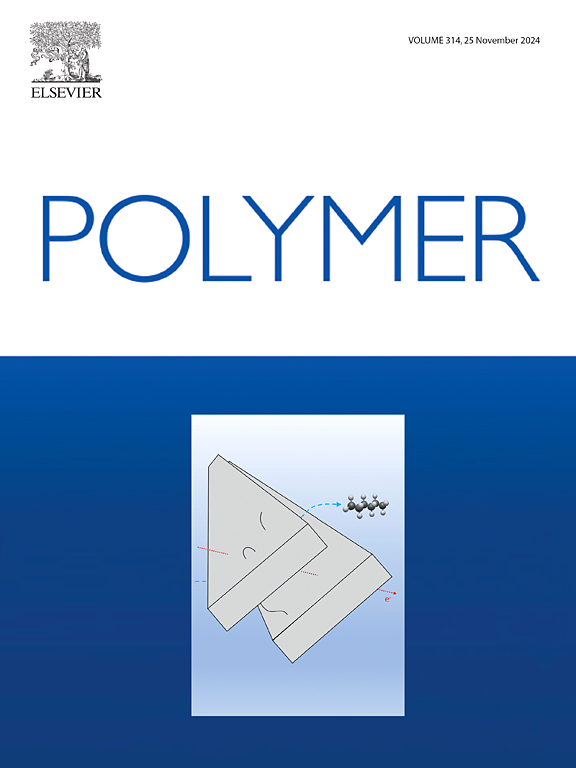Porous organic polymers derived from norbornenes based on methyl-substituted anthracene
IF 4.5
2区 化学
Q2 POLYMER SCIENCE
引用次数: 0
Abstract
A set of new metathesis and vinyl-addition polymers bearing different bulky framed 9,10-dihydroanthracene moieties in side chains has been prepared and studied as promising porous organic materials. The desired monomers have been readily synthesized in good yields via Diels-Alder reaction between 2,5-norbornadiene and methyl derivatives of anthracene. The ring-opening metathesis polymerization of these monomers in the presence of the 1st generation Grubbs catalyst afforded soluble high-molecular-weight products (Mw > 9 × 105). Vinyl-addition polymerization over Pd-system led to saturated polymers with rigid backbones. As a result, five new polynorbornenes with regularly changed structure have been synthesized. The polymers are glassy, thermally stable, and amorphous. The investigation into their N2, CH4 and CO2 sorption properties showed that the addition of methyl groups is an efficient approach to increase micro- and mesoporosity and CO2 solubility coefficients of such polymers. The polymers with methylated 9,10-dihydroanthracene moieties exhibited large specific surface areas (up to 740 m2/g), volume of micropores up to 0.17 cm3/g and infinite dilution solubility coefficients up to 2.2 mmol g−1 atm−1.


基于甲基取代蒽的降冰片烯衍生的多孔有机聚合物
制备了一组具有不同侧链大框型9,10-二氢蒽基团的新型复分解和乙烯加成聚合物,并对其作为有前途的多孔有机材料进行了研究。通过2,5-降冰片二烯与蒽的甲基衍生物的Diels-Alder反应,可以很容易地合成所需的单体。这些单体在第一代Grubbs催化剂的作用下进行开环复分解聚合,得到可溶的高分子量产物(Mw >;9 × 105)。乙烯基在pd体系上加成聚合得到了具有刚性骨架的饱和聚合物。合成了五种结构有规则变化的聚降冰片烯。聚合物是玻璃状的,热稳定的,无定形的。对其N2、CH4和CO2吸附性能的研究表明,添加甲基是提高聚合物微孔、介孔和CO2溶解度系数的有效途径。具有甲基化9,10-二氢蒽基团的聚合物具有较大的比表面积(高达740 m2/g),微孔体积高达0.17 cm3/g,无限稀释溶解度系数高达2.2 mmol g - 1 μ m - 1。
本文章由计算机程序翻译,如有差异,请以英文原文为准。
求助全文
约1分钟内获得全文
求助全文
来源期刊

Polymer
化学-高分子科学
CiteScore
7.90
自引率
8.70%
发文量
959
审稿时长
32 days
期刊介绍:
Polymer is an interdisciplinary journal dedicated to publishing innovative and significant advances in Polymer Physics, Chemistry and Technology. We welcome submissions on polymer hybrids, nanocomposites, characterisation and self-assembly. Polymer also publishes work on the technological application of polymers in energy and optoelectronics.
The main scope is covered but not limited to the following core areas:
Polymer Materials
Nanocomposites and hybrid nanomaterials
Polymer blends, films, fibres, networks and porous materials
Physical Characterization
Characterisation, modelling and simulation* of molecular and materials properties in bulk, solution, and thin films
Polymer Engineering
Advanced multiscale processing methods
Polymer Synthesis, Modification and Self-assembly
Including designer polymer architectures, mechanisms and kinetics, and supramolecular polymerization
Technological Applications
Polymers for energy generation and storage
Polymer membranes for separation technology
Polymers for opto- and microelectronics.
 求助内容:
求助内容: 应助结果提醒方式:
应助结果提醒方式:


